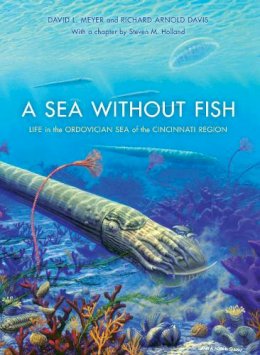
Stock image for illustration purposes only - book cover, edition or condition may vary.
Sea without Fish
Richard Arnold Davis
€ 52.56
FREE Delivery in Ireland
Description for Sea without Fish
Hardcover. An introduction to the rocks, fossils, and ancient sea-dwelling animals of the Cincinnatian Series: Life of the Past. Num Pages: 368 pages, 102 b&w photos, 14 color photos. BIC Classification: P; RBX. Category: (P) Professional & Vocational. Dimension: 262 x 186 x 27. Weight in Grams: 990.
The region around Cincinnati, Ohio, is known throughout the world for the abundant and beautiful fossils found in limestones and shales that were deposited as sediments on the sea floor during the Ordovician Period, about 450 million years ago—some 250 million years before the dinosaurs lived. In Ordovician time, the shallow sea that covered much of what is now the North American continent teemed with marine life. The Cincinnati area has yielded some of the world's most abundant and best-preserved fossils of invertebrate animals such as trilobites, bryozoans, brachiopods, molluscs, echinoderms, and graptolites. So famous are the Ordovician fossils and ... Read more
Show LessProduct Details
Format
Hardback
Publication date
2009
Publisher
Indiana University Press United States
Number of pages
368
Condition
New
Series
Life of the Past
Number of Pages
368
Place of Publication
Bloomington, IN, United States
ISBN
9780253351982
SKU
V9780253351982
Shipping Time
Usually ships in 7 to 11 working days
Ref
99-1
About Richard Arnold Davis
David L. Meyer is Professor of Geology at the University of Cincinnati. He lives in Cincinnati, Ohio. Richard Arnold Davis is Professor of Biology and Geology at the College of Mount St. Joseph in Cincinnati. He lives in Cincinnati, Ohio. Steven M. Holland is Professor of Geology at the University of Georgia, Athens. He lives in Athens, Georgia. ... Read more
Reviews for Sea without Fish
Paleontology is all about roots. A Sea Without Fish is an excellent example of how the history of a discipline and the history of life in the Cincinnati area come together to provide a fascinating, clear understanding about how our knowledge of fossils of the region has evolved. . . .This is an attractive, well-written, and beautifully illustrated book describing ... Read more
.png)